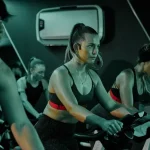In response to the Baychar Industries patent infringement suit filed against several of its customers, Outlast Technologies, Inc. on Friday September 10, filed a counter suit against Baychar, in Denver, Colorado, claiming Monte Magill and Outlast are co-owners of claim 8 stated below. Outlast has always, and will continue to, vigorously protect its intellectual property and patents.
In a letter to its customers, Outlasts legal counsel advises that:
Ms. Baychars patent is entitled “Waterproof/Breathable Moisture Transfer Liner for Snowboard Boots, Alpine Boots, Hiking Boots and the Like”. It was issued on April 11, 2000. Recently, Chris A. Caseiro, of the Verrill & Dana law firm in Portland, Maine, has written to a number of Outlast customers suggesting that products incorporating Outlast materials might infringe Ms. Baychars patent.
Outlast products feature phase change material technology (“PCM”). The only claim of the Baychar patent that conceivably could cover Outlasts PCM technology is claim 8.
8. A liner comprising:
An inner moisture transfer material;
A first layer of foam attached to the inner moisture transfer material;
A non-woven top sheet attached to the first layer of foam; and
Wherein the first layer of foam is treated to have reversible enhanced thermal properties.
It is important to understand several significant points concerning the Baychar patent.
The patent is very narrow. It only covers a three-layer composite formed of (a) an inner moisture transfer material; (b) a first layer of foam treated to have reversible enhanced thermal properties; and (c) a non-woven top sheet attached to the first layer of foam. Products that do not have this configuration do not infringe the Baychar patent.
Claim 8 clearly does not cover the current principal uses of Outlast technology: fabrics made with yarn embedded with PCMs, or materials in which the Outlast technology is laminated to a non-woven or other fabric.
The Baychar patent was issued in the United States. There is no corresponding patent coverage of which we are aware in Europe, Asia or elsewhere outside the U.S.
If it is ever challenged, claim 8 of the Baychar patent should be found invalid. Prior to filing her application for the patent, Ms. Baychar visited Outlast and actually purchased an Outlast product called “Alpine TRF3.” The Alpine TRF3 product had each of the elements of claim 8 of Ms. Baychars patent. Plainly, Ms. Baychar was not entitled to a patent on a product sold publicly by Outlast more than a year prior to the filing of her patent application.
The information set forth in this letter is not intended to be confidential or otherwise subject to the attorney-client privilege. Therefore, you may share this letter with your customers. If you or any of your customers have any questions, please call.
Very truly yours,
James E. Hartley, P.C.
Holland & Hart
Outlast Senior Vice President-Corporate Counsel, Duncan Edwards, points out that, “the more successful Outlast becomes, the more attention we and our customers receive from imitators such as Baychar.”
In recent months Outlast has garnered significant recognition with the purchase of some of Frisbys remaining assets; the American Society for Testing and Materials approval of a new standard test procedure to measure the amount of latent energy in textile materials (ASTM D7024); editorial inclusion in official NASA publications, trade and consumer media; new Smart Fabric Technology branding efforts; and most recently the launch of a consumer television commercial to support mainstream customers and their brands.
“Intellectual property and new technologies are often a hotbed of legal activity,” echoed Brad Poorman, Outlast senior vice president-global sales & marketing. “We will continue to defend our patents and to reassure our customers of our position in the marketplace.”















